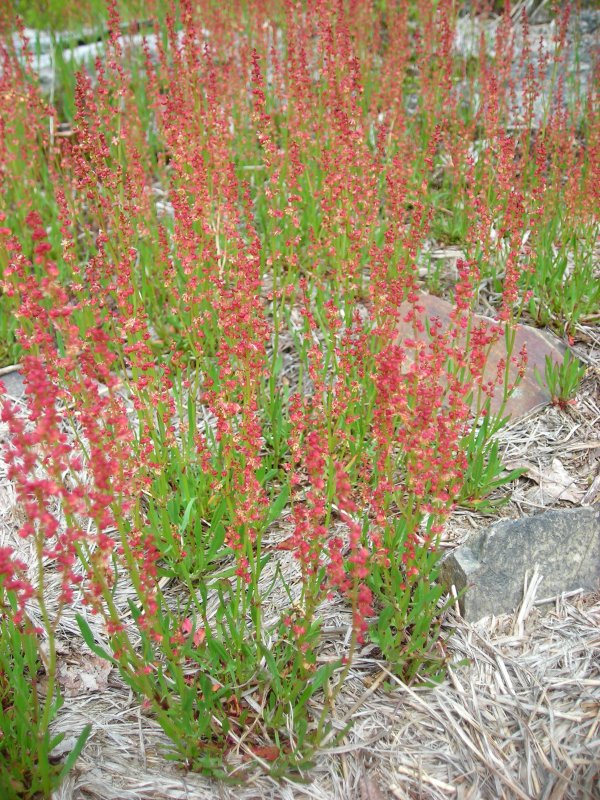
Sheep Sorrel, photo by Frogs On Ice
Is it Rumex hastatulus or Rumex acetosella? After all they look very similar. From one perspective it makes little difference: They taste the same and are used the same way. They both have oxalic acid and are tart: Think rhubarb lite. Regardless they are reaching maturity in the state now. These Rumex can show up in the early fall, and can be found in late spring. However, they favor the cooler winter months from Christmas to Valentines Day, give or take a few weeks. These sorrels are quite easy to spot, a basal rosette of dagger-shaped leaves with several light green stalks topped with cream-colored plumes that turn pink to red as they mature. In a foraging class this weekend in Jacksonville the sorrel was happily putting on seed where lawns were’t being mowed. One can sometimes find them in pastures, depending what grazing animal is raised there.
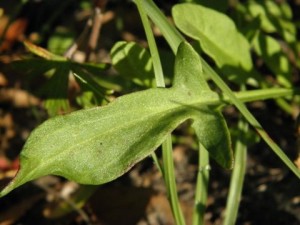
Rumex hastatulus leaf, photo by Eol
To help with identification Rumex hastatulus has a tap root and reaches two feet high or more. Rumex acetosella doesn’t have a tap root and is more mat growing rarely getting above 18-inches high. The R. hastatulus has broadly winged seeds, the Rumex acetosella does not. Indeed, the Rumex hastatulus is called the Heart-Winged Sorrel for the distinct wings on the seeds. Rumex acetosella does not have a heart shape on its seeds or if the wings are there they are very tiny. As for the leaves being different shaped they’ve been quite inconsistent locally. If I had to guess the Rumex hastatulus has hilts on their leaves more often than not and Rumex acetosella less often or not. Both are a nice trail-side nibble and addition to salads. You can also make a soup out of them (the leaves that is.) You can read about the sorrels here and here.
Also gracing lawns right now — if that is the right verb to use — is Drymaria cordata, West Indian Chickweed. It’s zoochorous, which is all Greek meaning its seeds are spread by animals, including man. If you walk through it or grab a stem of seeding heads they will stick to you. And if the sun catches them just right it looks like a patch of snow on your green lawn, hence the other common Caribbean name: White Snow. (I must admit I have wondered why they called it White Snow, as if “Snow” would not have worked well. Then again, how much snow do they get in the Bahamas? Well… it did snow there 19 January 1977. It also snowed in Miami. I remember because I came to Florida from Maine that very day and it snowed in Florida… what a welcome…) Drymaria is a little controversial. I view it as a minor edible, toss a little in a salad now and then because it does have medicinal applications. Other people tell me they use it just like chickweed. To read more about it go here.
New articles added: Hydrilla,
What’s the Buzz? We know flowers attract pollinators through petal colors, shapes and scent. Two related edible species actually change blossom colors during the day to do just that, the Mahoe and the Seaside Mahoe. The blossoms start out yellow in the morning but turn red in the afternoon. But now scientists have found an invisible feature that flowers use to get more attraction.
Plants emit a weak negative electric fields that bees are able to detect, according to researchers at the University of Bristol in England. The research was published Thursday in the latest online edition of the journal Science Express. The study found that bees’ flapping wings create a positive electrical charge of up to 200 volts as they fly through the air. They forge a special connection when encountering the charged flowers. The electricity is not enough to produce sparks, but it makes flowers easier for the bees to remember. And the bees can keep track of different flowers by their electrical fields.
“This novel communication channel reveals how flowers can potentially inform their pollinators about the honest status of their precious nectar and pollen reserves,” said study leader Professor Daniel Robert.
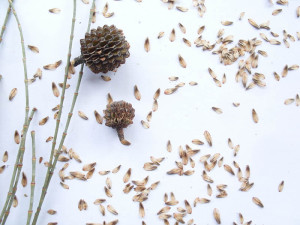
Gray She Oak branchlet, cone and seeds. Photo by John Tann
The red sap is drinkable. When dried to a gum it’s edible. Young cones, branchlets and seeds are also edible. It’s a sign of fresh water even on tiny salty spoil islands. The tree can be cut down and burned immediately, and it’s a superior wood for barbecuing and smoking. It’s also an excellent windbreak, stabilizes canal banks, and fixes nitrogen. So why is the Australian Pine hated? They grow fast, threaten native ecosystems, their roots destroy roads and city water/sewer pipes, and its leaf litter is allelopathic. It has a growth inhibiting effect on other plants. Also in soil-shallow Florida they fall over, a lot. While not a prime edible it is usually an overlooked resource. To read more about the Australian Pine, which is not a pine, go here.
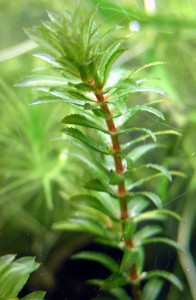
Hydrilla, photo by S.L. Winterton
Florida has both of the top two invasive aquatic weeds in the world: Water Hyacinth and Hydrilla. Water Hyacinths came to the state well over a century ago and was intentionally released. With preparation Water Hyacinth is edible. You can read about it here. But what about Hydrilla? It showed up some 60 years ago with no history of edibility. However, it’s available in powdered form in health food stores and packs a lot of nutrition particularly calcium. But you won’t be seeing it in your green grocer’s department. Why? I can think of two reasons. Most of it does not grow in wholesome water, and it has a texture issue that drying gets around, kind of. To read more about Hydrilla go here.
While fishing around to find an article to end this newsletter I read about WRISC, which is a CWMA. Wild Rivers Invasive Species Coalition is a Cooperative Weed Management Area that works in northeastern Wisconsin and the south western Upper Peninsula of Michigan. This time, however, it is not a weed they are complaining about.
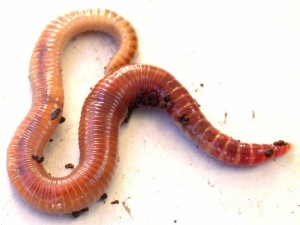
Forest enemy #1, photo by Animalstown
WRISC won a grant to “Slow the Spread: Earthworm Education for Anglers.” Earthworms, you see, are not native to the Great Lakes area. Settlers brought the earthworms with them and there are now some 15 different species crawling under the hardwood forest, which is not supposed to have worms. They are an invasive species. WRISC writes “researchers have document dramatic changes in native hardwood ecosystems when exotic earthworms invade, including losses of naive understory plants and tree seedlings, changes in soil structure, and declines in nutrient availability. These changes affect small mammal, bird and amphibian populations, increase the impact of white-tailed deer, and facilitate invasion of exotic plants like buckthorn and garlic mustard.” Should you want to help protect the environment from these underground invaders you can join the Worm Watch by clicking here. Or, you can read an article about preparing Earthworms to eat.

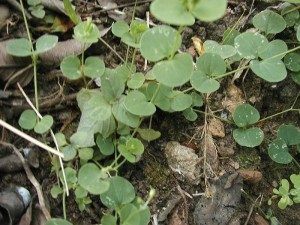
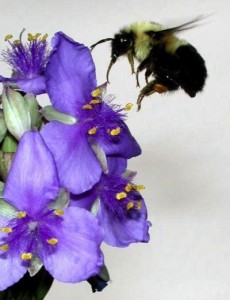

Interesting article on the aquatic hydrilla. recently I have been extremely curious of edible aquarium plants, their identification and the water source they live in. I read that Tilapia are a plant eating fish, used to control a number of “water weeds”, however, they do not do well when the temperatures drop. Could you share more information concerning edible aquatic plants? Also, I was educated many years ago, that cattail (Typha latifolia) can purify most waters where it grows. I wonder if cattail would indirectly inhibit the aquatic plants that require murky, contaminated waters, simply by cleaning the habitat?
Also, I learned that crawfish help the cattails clean up contamination, as well as consume invertebrates, such as mosquito larva, earthworms, and a variety of bacteria that infect fish.
Any further information would be appreciated.
Thank you for taking this time to share your information.
Sir, what have we done to receive from below and above punishment from Mother Nature: earthworms underground invaders (though some claim they increase fertility in some soils -e.g. Nile clay where citrous fruits are grown ) and here in north of my country Sudan, air invaders – swarms of desert locusts coming from north east (the unpoisoned ones are edible when fried ). Look at the late snow storm of West Texas and the hundreds of tumbleweeds against a Midland home blocking some doorways . What about the meteor attack on Russian ground?! However Mother Nature still loves us as long as we keep our promise to love Her. Hence thank you ,Prof Daniel and his team for the inf. on the harmony and mutual benefit of flowers and bees; how their “flapping wings” end in “honying” us.Also thankful for reminding of the happy times of youth using earhworms and angling for fish near Jebel Awlia dam (on the White Nile south of the capital Khartoum . Apart of a fishing sight it is now used to trap the Hyacinth plant from crossing northwards ). Lastly, how lovely to “listen to the “Gash river breeze whisiling through the needle-like branches of the Australian Pine (Casuarina equisetifolia) ” I have now known why we couldn’t have found the lovely beetle “kudondar” -native for Ampidus sanguineus (we used to play with joyfully when under teenagers )on that tree while it had been easier to obtain from an Acashia tree type having more nourishing leaves. Gash is a seasonal river that crosses Kasala town boardering Eriteria .
love the bee research on the negatively charged fields emitted by the flowers.
one wonders if and how, cell phone and wireless fields and other EMF technological fields might interfere or interact with these natural charges…
I’m with you. I loved the electrically charged bees and flowers. How magic does it get. I also found the earthworm item interesting although, I think I’d eat a bug before a worm.